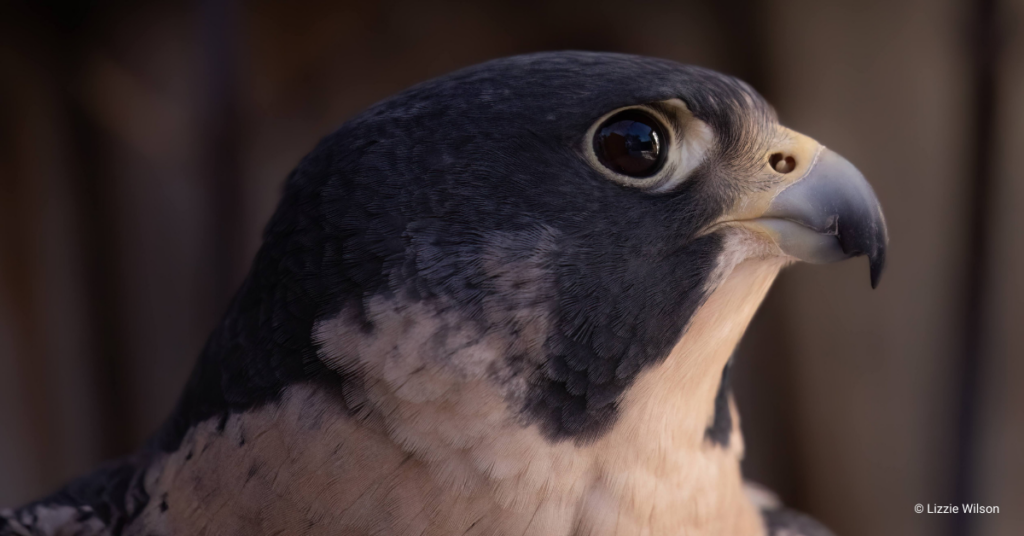It isn’t easy being a raptor. Even at the top of the food chain, these predators face many threats, such as disease, drought, vehicle collisions, habitat degradation, poaching, electrocution, and lead.
The U.S. Geological Survey estimates that between 6,000 and 10,000 tons of lead (or 12 to 20 million pounds) enter our nation’s uplands, wetlands, and waterways annually. There are a variety of sources that contribute to that number, but one we’re frequently asked about is lead ammunition.
We recognize that this issue can be polarizing, and we aim to objectively share what the science tells us in this blog. We will focus on eagles, as they are one of the raptor groups most affected by lead.
Why Eagles are More Prone to Lead Poisoning
Eagles are particularly susceptible to lead poisoning because they are scavengers—especially in the winter when prey is scarce—which means they are more likely to encounter lead left behind in hunting remains. Additionally, fish comprise a large percentage of the Bald Eagles‘ diet, meaning they may also interact with lead through fishing weights. This means that eagles are bound to have higher exposure than many other bird species. If you are not convinced that lead is impacting eagles, then let’s dive a bit deeper.
We often hear that the bullet is never left behind in the gut pile. Unfortunately, studies show otherwise. When a bullet pierces an animal, it doesn’t stay in just one place. In one study, researchers found that 90% of gut piles analyzed contained lead fragments, and 50% had over 100 lead fragments (Hunt et al., 2010). To put the impact of that number into perspective, a piece of lead the size of a grain of rice is enough to kill an eagle. It is also important to remember that throughout their lifetime, eagles will feed on multiple carcasses, compounding their lead levels.
Lead’s Toll
A study found that of 1210 Bald and Golden Eagles sampled, about half showed chronic lead poisoning, and a third showed acute poisoning. Of the birds that had lead evident, they estimated that a quarter had levels high enough to be deadly. Based on these numbers, eagle populations are being suppressed by about 0.8 to 3.8% per year due to lead (Slabe et al., 2022). This may not seem like a lot, but it is enough to have long-term impacts on populations.
Wildlife Rehabilitation centers are also regularly seeing the impact of lead exposure. The Washington State University’s Raptor Rehabilitation Center tested for lead in the blood of Bald and Golden Eagles from Washington, Oregon, Idaho, Montana, and Alaska. They found that 48% of Bald Eagles and 62% of Golden Eagles had blood lead levels (BLLs) considered toxic (Stauber et al., 2010). The Raptor Center in the University of Minnesota’s College of Veterinary Medicine estimates that 90% of the Bald Eagles they receive have elevated levels of lead in their blood, and about 20-25% of their deaths are directly caused by lead. In Michigan, lead is the third leading cause of death in Bald Eagles. We can continue to list examples across the country, pointing us to the answer that lead is impacting eagles and doing so at a large scale.
What Can You Do to Help?
Lead is just one of the many threats that eagles face. Still, research indicates that it is a real threat to Golden Eagles, which have declined in our home state of Utah and elsewhere.
Often, many of these threats are difficult for us as individuals to address. Switching your shot away from lead ammunition is one simple way to make a difference. Copper bullets are a good alternative to lead as they fragment less upon impact. We know that copper bullets are more expensive, so if a complete switch is not possible, consider at least using an alternative bullet when meat or gut piles are being left behind. Similarly, swap out lead fishing lures for steel, tin, or tungsten. If you aren’t a hunter or angler yourself, talk to those around you and share this message.
One way we are sharing the message is by launching a new education initiative in 4th-grade classrooms across Utah, educating students on their State Bird of Prey: the Golden Eagle. Thanks to support from the JAKA Foundation, these programs will discuss their major threats, such as drought, habitat loss, and lead, along with what they can do to help protect this species.
We want to emphasize that our interest in switching away from lead shot is to protect wildlife. We are not an anti-hunting group and acknowledge that hunters and anglers are often some of the most passionate conservationists—we even have a few on staff! So please consider removing lead from your fishing and hunting gear as a way to benefit both your own health and raptors.
This blog was written by Sammy Riccio, our Communications Manager. You can learn more about Sammy here.




